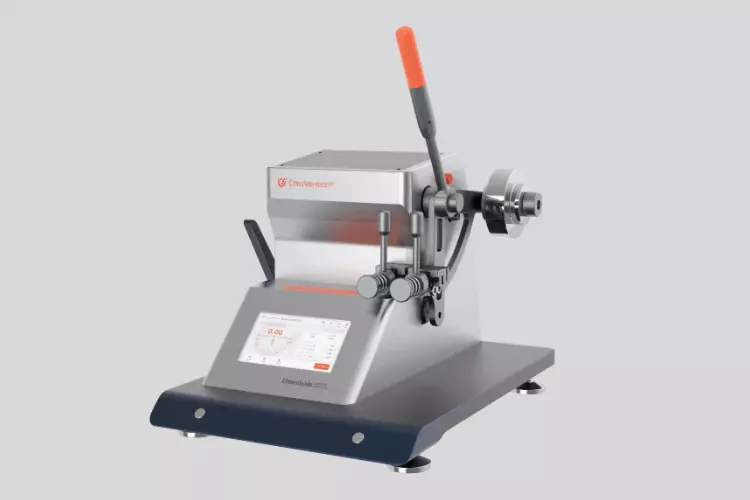Are you looking for effective ways to ensure the longevity and accuracy of your Elmendorf Tear Tester? Proper maintenance is crucial to maximize the lifespan and precise measurements of this essential testing equipment. In this article, we provide valuable tips and guidance on how to maintain your Elmendorf Tear Tester for optimal performance. By following these suggestions, you can enhance the durability, reliability, and accuracy of your testing instrument, ultimately improving the quality of your tear strength measurements.
Regular Calibration and Verification
One of the most crucial aspects of maintaining the longevity and accuracy of your Elmendorf Tear Tester is regular calibration and verification. This ensures that the instrument is functioning correctly and providing accurate tear strength measurements.
Calibration involves comparing the readings of the tear tester to a known standard to check for any deviations or inaccuracies. It is recommended to calibrate the instrument at least once a year or as per the manufacturer’s guidelines.
Verification, on the other hand, involves performing periodic checks to confirm that the tear tester is still providing accurate results. This can be done by testing samples with known tear strengths and comparing the results with the expected values. If any discrepancies are found, adjustments or further calibration may be necessary.
Regular calibration and verification not only ensure the accuracy of the tear tester but also help identify any potential issues or malfunctions early on. By detecting and addressing problems promptly, you can avoid erroneous measurements and maintain the reliability of your test results.
Proper Cleaning and Maintenance Procedures
To ensure the longevity and accuracy of your Elmendorf Tear Tester, regular cleaning and maintenance procedures are essential. By following these tips, you can optimize the performance of your tear tester and extend its lifespan:
- Keeping the Tester Clean: Regularly clean the exterior surface of the tear tester using a soft cloth and mild detergent. Avoid using abrasive cleaners or solvents that can damage the instrument. Pay special attention to removing any dirt or debris from the clamps and grips.
- Calibration and Verification: Schedule routine calibration and verification checks for your tear tester. This ensures that the instrument is accurately measuring tear strength and provides reliable results. Follow the manufacturer’s instructions for calibration procedures or consult a professional technician.
- Lubrication: Lubricate the moving parts of the tear tester according to the manufacturer’s recommendations. This helps reduce friction, ensuring smooth operation and preventing unnecessary wear and tear. Use only the specified lubricants and avoid over-lubricating.
- Inspecting the Grips and Clamps: Regularly inspect the grips and clamps for any signs of wear or damage. Replace any worn-out or damaged parts immediately to prevent inaccurate test results and potential instrument failure. Keep spare parts on hand for quick replacements.
- Storage: When not in use, store the tear tester in a clean and dry environment. Protect it from extreme temperatures, excessive dust, and moisture. Cover the instrument with a dust cover or use a dedicated storage case to prevent any potential damage.
- Training and User Manual: Ensure that the operators are trained in the proper usage, cleaning, and maintenance of the Elmendorf Tear Tester. Refer to the user manual provided by the manufacturer for detailed instructions and guidelines. Following the recommended procedures will help maintain accuracy and prolong the instrument’s lifespan.
By following these proper cleaning and maintenance procedures, you can maximize the longevity and accuracy of your Elmendorf Tear Tester, ensuring reliable results for years to come.
Inspection and Replacement of Worn Parts
Regular inspection and replacement of worn parts are essential for ensuring the longevity and accuracy of your Elmendorf Tear Tester. Over time, certain components may become worn out or damaged, which can affect the overall performance of the machine. By following these guidelines, you can maintain the reliability and precision of your tear tester:
- Visual Inspection: Start by conducting a visual inspection of the tear tester. Look for any signs of wear or damage on the various parts, including the base, clamps, pendulum, and weights. If you notice any cracks, chips, or other forms of damage, it may be necessary to replace the affected components.
- Functional Testing: Perform functional tests to ensure that all the machine’s functions are working properly. This includes checking the smooth movement of the pendulum, the accuracy of the digital display, and the functionality of the clamps. If you detect any abnormalities or inconsistencies, it is advisable to inspect the corresponding parts more closely or contact a professional technician for assistance.
- Replacement of Worn Parts: If you identify any worn or damaged parts during the inspection or functional testing, it is crucial to replace them promptly. Contact the manufacturer or supplier of the tear tester to obtain the necessary replacement parts. It is important to use genuine parts to maintain the accuracy and performance of the machine. Follow the manufacturer’s instructions or seek professional assistance to ensure proper installation of the replacement parts.
- Maintenance Schedule: Create a maintenance schedule for your Elmendorf Tear Tester, which includes regular inspections and replacement of worn parts. Depending on the frequency of use and the specific requirements of your machine, this schedule may vary. It is recommended to consult the tear tester’s user manual or contact the manufacturer for guidance on the maintenance intervals.
- Record Keeping: Keep a record of all inspections, functional tests, and part replacements performed on your Elmendorf Tear Tester. This record will help you track the machine’s maintenance history and identify any recurring issues or patterns. It can also serve as a reference when scheduling future maintenance tasks or when contacting technical support.
By regularly inspecting and replacing worn parts, you can ensure the longevity and accuracy of your Elmendorf Tear Tester. Following these guidelines will help you maintain a reliable and precise testing instrument for your tear strength analysis needs.
Correct Sample Preparation Techniques
Proper sample preparation is crucial for obtaining accurate and consistent results with your Elmendorf Tear Tester. Follow these tips to ensure correct sample preparation:
- Select the appropriate sample size: Before testing, determine the required sample size based on the specific standards or specifications applicable to your testing. Using the wrong sample size can lead to inaccurate results.
- Use consistent sample cutting techniques: When cutting samples, ensure that the cutting technique is consistent for all specimens. Irregular edges or uneven thickness can affect tearing resistance measurements.
- Avoid sample contamination: Clean your hands thoroughly before handling the samples to avoid contamination. Additionally, use clean gloves or tweezers to prevent transfer of dirt, oil, or moisture onto the samples.
- Allow sufficient acclimation time: Before testing, allow the samples to acclimate to the testing environment for a specified period. This ensures that the samples reach equilibrium with the testing conditions, minimizing the influence of temperature and humidity on the tear resistance measurements.
- Prevent sample moisture: Moisture can significantly affect tear strength measurements. Ensure that the samples are stored in a dry environment and handle them with care to avoid moisture absorption.
- Check for imperfections or defects: Inspect each sample for any visible imperfections or defects, such as holes, tears, or surface irregularities. Such defects can lead to inconsistent test results.
- Properly align the samples: Position each sample correctly on the Elmendorf Tear Tester, ensuring that it is aligned properly with the tear axis. Misalignment can affect the tear propagation and result in inaccurate measurements.
By following these correct sample preparation techniques, you can ensure reliable and precise results from your Elmendorf Tear Tester, prolonging its longevity and maintaining accuracy over time.
Training and Education for Operators
Proper training and education for operators is crucial for ensuring accurate and reliable results from your Elmendorf Tear Tester. Here are some essential tips to consider:
1. Initial Training
When operators are new to using the Elmendorf Tear Tester, it is important to provide them with thorough initial training. This training should cover the basic principles of tear testing, instrument operation, and safety precautions. Make sure operators understand how to properly handle the test specimens, load them onto the machine, and interpret the results.
2. Ongoing Education
Technology and testing standards are constantly evolving, so it is essential to provide operators with ongoing education and training opportunities. This can include attending workshops, seminars, or webinars related to tear testing. Staying updated with the latest industry developments will help operators enhance their skills and knowledge, leading to improved testing accuracy.
3. Safety Training
Operators should receive comprehensive safety training before operating the Elmendorf Tear Tester. This training should include proper handling of sharp specimens, understanding safety features of the machine, and using personal protective equipment. Emphasize the importance of maintaining a safe working environment to prevent accidents and injuries.
4. Calibration and Maintenance Training
Operators should be trained on the calibration and maintenance procedures for the Elmendorf Tear Tester. They should understand how to perform routine maintenance tasks, such as cleaning and lubrication, as well as how to calibrate the machine to ensure accurate results. Regular calibration and maintenance are vital for the longevity and accuracy of the instrument.
5. Record-Keeping
Operators should be educated on the importance of proper record-keeping. They should know how to accurately record test parameters, test results, and any relevant observations. Maintaining detailed records allows for traceability and helps identify any issues that may arise during the testing process.
By prioritizing training and education for operators, you can ensure that your Elmendorf Tear Tester is operated correctly, leading to reliable and accurate tear strength measurements. Investing time and resources into training will ultimately contribute to the longevity and accuracy of your testing equipment.
Conclusion
Proper maintenance of your Elmendorf Tear Tester is crucial for ensuring its longevity and accuracy. By following these tips, you can maximize the lifespan of your equipment and obtain accurate tear strength measurements consistently. Regular cleaning, lubrication, and calibration are key aspects of maintenance that should not be overlooked. Additionally, storing the tester in a controlled environment away from extreme temperatures and humidity can prevent damage and ensure optimal performance. Remember to consult the manufacturer’s manual for specific instructions and guidelines. By investing time and effort into maintaining your Elmendorf Tear Tester, you can rely on its accuracy and reliability for years to come.




